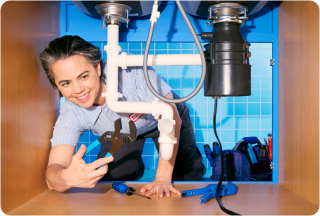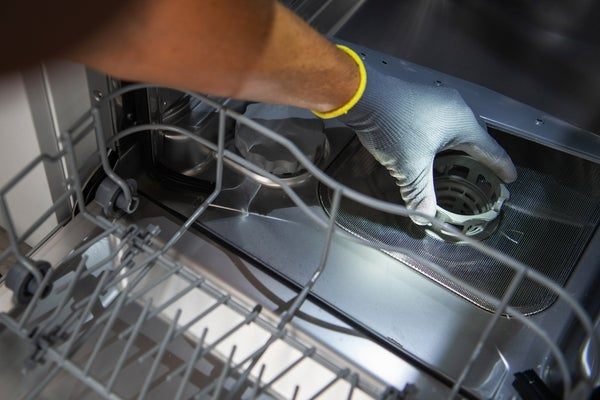A clogged sewer line in your basement, cellar, or outside can cause plumbing issues that are expensive and frustrating to deal with, but it doesn’t have to spell disaster.
If you think that your sewer is clogged, follow these guidelines to learn how to identify the issue, fix it, and when to call in a professional.
What Causes a Clogged Sewer Line?
A clogged sewer line can stem from:
- Tree roots. Tree roots cause the majority of sewer line clogs, particularly in older houses. Drawn to the warmth and moisture offered by sewer lines, tree roots enter the pipes through any tiny cracks or loose joints they can find. Feeding on the plentiful nutrients they find there, the roots grow and create blockages in the sewer line.
- Fats, oil, and grease. Known in the plumbing community as FOG, fats, oil, and grease can sometimes lead to a clogged sewer line. When hot, these substances are liquid, so many people pour them down the drain without another thought; but as soon as they cool off, they congeal, trapping debris and causing blockages.
- Foreign objects. Tampons, pads, diapers, paper towels, facial tissues, baby wipes, and even extra-thick toilet paper can get stuck in your pipes and cause a sewer line stoppage.
- Old sewer lines and plumbing issues. If you live in an older home and have not replaced your pipes, they will inevitably develop cracks and breaks that end up in total piping system collapse. Even if your home has a newer piping system, if the plumbing connections are poorly made, it may cause a sewer line clog.
How Do I Know if I Have a Main Sewer Line Clog?
Tell-tale signs that your sewer line is clogged include:
- Gurgling sounds. Any gurgling, gargling, and glugging sounds coming from your toilet means you may have a sewer line clog.
- Malodorous smells. If your drains aren’t smelling normal, it could indicate that you have a clogged sewer line.
- Slow-running drains. Multiple slow-running drains and low water pressure in your home also suggest a sewer line issue.
- Water in strange places. If you have a fountain of water pouring from your shower head when using the washing machine or if water comes up in the tub when you flush the toilet, it may mean your sewer line is clogged.
- Sewage in your sink. The grossest sign of all, sewage coming back up through the drains into your sink, shower, or tub is a surefire sign that your sewer line has a problem.
However, just a single slow-flushing toilet or slow-flowing drain does not necessarily indicate a blocked sewer line. You will usually have problems with all of the drains in your home at the same time, especially the toilets. When it comes to a clogged sewer line, the porcelain throne is king. Toilets have the most direct route to the sewer and the biggest drain line. If your toilets are causing your home’s other drains to overflow when they are flushed, or if your toilets overflow when you use the washing machine or dishwasher, it’s highly likely that you have a sewer line problem.
How Do I Diagnose a Clogged Sewer Line?
To pinpoint the exact cause of your clogged sewer, you may need to explore the nitty-gritty depths of your sewer line through a camera inspection. Hypothesis-based dig points are a thing of the past; these days, a sewer video inspection professional will come to your house to run a video line through your waste pipes and locate the source of the blockage.
Think of the camera inspection as analogous to an endoscopy: the camera travels through the pipes and records any issues in real-time detail. The camera unit will transmit the blockage point location through a locating device. This point indicates where you should dig the sewer trench.
Once you have diagnosed the clogged sewer line, the next step is figuring out how to unclog a sewer line.




